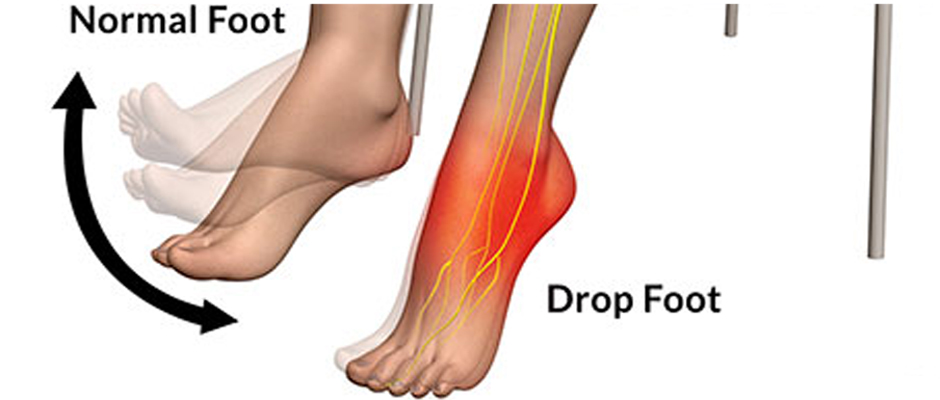Definition: dropping of the forefoot due to muscle weakness, damage to the peroneal nerve or paralysis of the anterior muscle group of the leg.

Drop foot is condition where people have the inability to lift the front part of their foot off the ground when walking. People suffering from drop foot often drag their toes along the ground or excessively bend their knees to lift their foot higher than usual to avoid dragging.
What are the signs and symptoms of drop foot?
How do you diagnose drop foot?
A foot specialist or any other medical professional, such as a family physician, neurologist or physical therapist, can make an initial diagnosis of drop foot through a physical examination and gait analysis (walking analysis).
The physical examination will consist of testing the different muscles groups of the leg. The gait analysis will help diagnosis any signs of drop foot. Further imaging and neurological test can be performed to confirm the diagnosis.
What causes drop foot?
The most common cause of drop foot is due to a neurological disorder or nerve damage including:
How do you treat drop foot?
Treatment of drop foot depends on the root cause of the drop foot. The Foot Guy, David Allison, has a variety of methods to treat drop foot and improve walking ability, including:
Surgery may be required for some cases of drop foot and can be discussed by your family physician.

